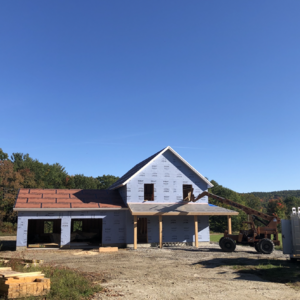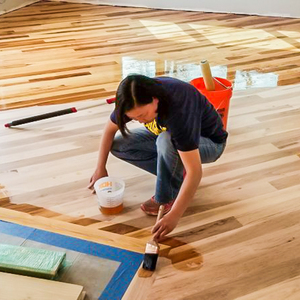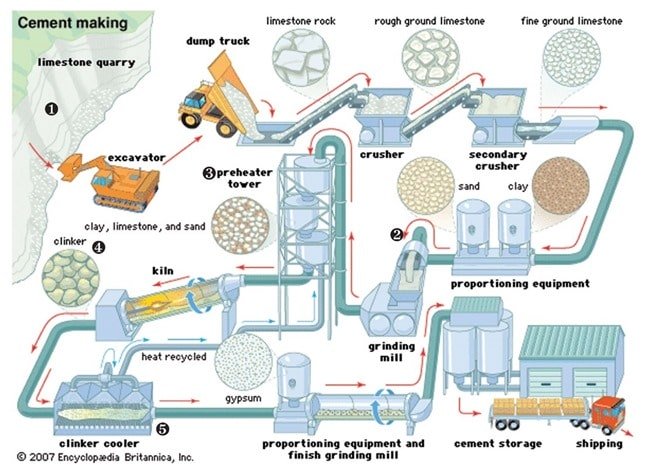
We know…you want siding that is beautiful, sustainable, maintenance-free, and affordable. The problem is that each of these criteria are completely subjective, and each homeowner places a different priority on each. This makes selection difficult. There are just so many options from which to choose and it’s difficult to wade through the ocean of literature and opinion to find the perfect siding for your sustainable home.
Lucky for you, we have hit the record button on an in-depth conversation about siding, as well as a splendid cocktail, the Montenegroni, that Phil describes as “a wonderful summery drink.” We have also crafted a handy chart to help rate the different siding options at a glance (shown above). One might disagree or be surprised by some of the ratings. While they might not be scientifically precise this episode goes into great detail about how and why certain materials got the scores they did.
The Cocktail: Montenegroni:
- 1 oz Montenegro
- 1 oz Sweet Vermouth
- 1 oz Gin
Stir together and pour over ice. Garnish with lemon twist. Cheers!
The Highlights:
- Natural Wood Siding: Probably your most sustainable choice. Detailing and the use of a rainscreen is critical to make this a lasting material. Also, FSC is important.
- Treated Wood: Acetylation, and Torrefication – learn what makes these great choices for siding.
- Exotic Woods: If you’re trying to be sustainable, you’re probably avoiding exotic woods for good reason.
- Composite Sidings: Fiber cement – resource efficient but also high in embodied carbon. Smartside and Truexterior is also discussed.
- Vinyl Siding: Not as bad as you think, but still bad.
- Metal Siding: Not just for commercial buildings anymore.
Pet Product:
Pine Tar: Chris talks about how after doing a little research on natural coatings, he’s eager to try out pine tar on an upcoming project. There’s a fine article about it here.
Song of the Episode:
Rings (On a Tree) by Frankie Cosmos
Be sure to read the full article mentioned in the podcast at Green and Healthy Homes
-The Green Architects’ Lounge hosts are Chris Briley and Philip Kaplan. Chris is a principal at BRIBURN architecture for life. Phil is a principal at Kaplan Thompson Architects.
Never miss an episode and take the podcast with you! Subscribe to the Green Architects’ Lounge on iTunes or from wherever you download your podcasts. Special thanks to our sponsor Pinnacle Window Solutions, Mitsubishi Electric, and Maine Home + Design!
Weekly Newsletter
Get building science and energy efficiency advice, plus special offers, in your inbox.














18 Comments
Bump and Crevice,
Great, great episode. Thank you!
You got it Rick! Thanks for listening.
Thanks for the post. I look forward to listening.
Question 1:
Why can't I download the audio file, either here or from SimpleCast?
Question 2:
When I go to simplecast, there are more episodes that have not been posted here. Will episodes not be posted here as much any more? That would be unfortunate, as we lose the chance to comment when the topic is fresh for the presenters.
John,
I recommend an RSS Feed Reader.
Right-click, Save As or just keep listening to it in your browser:
https://cdn.simplecast.com/audio/244dd9/244dd98f-d8ab-4943-9b47-4fb0f1713e30/c1fa1173-b862-4012-ab05-57988d09fdc2/ep49_siding_tc.mp3
Great podcast!
Hi John,
Q1: The audio is a podcast. Like most podcasts, you can't directly download the mp3 audio file. But as a podcast you can subscribe to the Green Architects' Lounge from just about any streaming or music platform such as Spotify, Stitcher, iTunes, Apple podcast app, GooglePlay, iheart radio, etc. With most of these services, you can play any episode, anytime that you want. In the case of Spotify, for example, if you are a premium member, you can save the episode to play later, even if you don't have an internet or wifi connection (essentially downloading it and saving it in your device's memory cache). I'm an architect, not an IT guy, so that's about the extent of my knowledge on the subject.
Q2: We usually post an episode to Simplecast, then write a blog post for GBA. Sometimes there's a gap in time between those two events. (our Bad)Then it enters the cue of blogs and articles being written for GBA and that cue can be really long sometimes. We just had a little pow-wow about that and we're going to try to be better about closing the gap of time between postings there and here. Thanks for your input, your patience, and your continued interest in the program.
Hi Chris,
Thanks for your reply. It would be great to see the posts here more quickly, but I understand it takes some work to make happen.
By the way, "the audio is a podcast" can also be read as "the podcast is just audio". Using the simplecast site, I use firefox to expose the underlying media file and grab the mp3. Not something that I would expect a regular listener to do. I want to listen to them while running heavy machinery, out of range of data, using a simple mp3 player that can take punishment.
Making the mp3 directly downloadable is just a suggestion for users who don't want to use iTunes, Google, Spotify, or any membership music service whatsoever (like me).
I have listened to every episode of your podcast... I am a big fan ;-)
Thanks again John! So are you saying you're not able to grab the audio (as you describe) or are you saying people like you who want a downloadable audio file but who are not like you (savvy enough to penetrate the technology) would benefit? Either way, I'll look into that possibility from either simplecast or GBA.
If one is among the millions who live in areas that may be periodically threatened by wildfire storms (or other natural disasters) during the expected lifetime of the home, comparative resistance to fire, etc., should be high on the list of factors to consider. Yes, it may be possible for some -- though not for others -- to landscape with a defensive perimeter, but in California and many other Western states, a sufficiently powerful firestorm will mock such efforts, and scatter burning embers all around and on one's nice sustainable home -- which will be all too happy to become a dead house burning if it is combustible enough.
Perhaps a GBA article discussing building science -- including choices for siding, roofing, and other exposed surfaces -- that promotes sustainability during disasters would be a valuable contribution to our overall body of knowledge?
This is a good suggestion, John.
As Mainers, Phil and I aren't the best qualified for such a discussion, but I agree, this would be a good topic.
I am curious about the sources that led to the conclusion that vinyl siding is far more toxic than any alternatives, or more problematic to dispose off. When Fernando Ruiz wrote his famous piece on the topic (link pasted at the end of this comment), it was opinionated, but at least he provided useful links to some credible sources.
Impact on old-growth forest would also seem like a useful column to add to the chart above. The use of cedar and exotic woods may not fare so well in that category. Per recent NAHB data, only 5% of new homes built in the US are sided with wood. If most new homes were to be sided with cedar or exotic wood instead, the effect wouldn't be as pleasing for those of us who care about old trees.
https://www.smithsonianmag.com/science-nature/how-thousand-year-old-trees-became-new-ivory-180963365/
Sorry, I don't have the patience of listening to the 75 minutes podcast to hear the answer to these questions :)
https://www.greenbuildingadvisor.com/article/in-defense-of-inconvenient-truths-about-vinyl-siding
The comments following that article were also interesting.
Hi Vivian,
Chris and Phil offered a very fair analysis of Vinyl Siding. It wasn't the usual "Its a petrochemical product with dioxins and is therefore going to kill you" type of message.
Chris in particular had clearly done his homework and I don't think he would disagree with anything in the article you shared by Pages Ruiz. He admits that Vinyl siding manufacturing has improved a lot and that it actually has less embodied energy than many believe. I didn't get the impression that they felt that vinyl siding is toxic during the manufacturing process (anymore) nor is it toxic while hanging from the walls of your home.
Their criticism of vinyl siding was centered around three points:
1. it's kind of ugly and flimsy
2. it doesn't age well
3. ***Disposing of it is problematic***.
It's the disposal part that worries them and is the reason for the high toxicity rating. They state that there are few if any paces willing to recycle vinyl siding and therefore the stuff will undoubetly end up in a landfill one day. They worry that dioxins, etc may over time leach from the material causing health issues. Chris adds that many landfills already have PVC liners and admits that his concern may be a moot point. However, Their biggest concern is that rubbish in landfills is often burned- especially in Maine where they live and work. They worry that burning the vinyl may release the dioxins, etc into the air.
I've often felt that criticisms of vinyl siding and windows were overstated. I think Chris and Phil offered a very, very fair picture. I must admit that I never gave much thought to the disposal aspect and it is indeed worrisome.
As far as sources- its a podcast and not an article. I see it is a 'discussion' from which you can draw your own conclusion and do your own research. But, you'll have to listen to the podcast first! :-)
Rick thanks! I don't think I could have replied with a better response myself. Cheers!
I'm pretty sure cedar doesn't come from old growth trees. A study in 2013 found that Western Red Cedar was the most sustainable siding material of all considered. Both types of cedar mentioned (perhaps worth noting that they aren't actually cedar, as the only true cedars are native to the middle east) are relatively rapidly growing and are generally sourced from managed forests. Exotic woods are a different story, but note that the table did in fact rate them as the worst for embodied carbon.
Yeah I'm going to agree with Trevor that, generally, cedar siding isn't produced from old-growth. Shingles and shakes can be made with some wonky stock too.
The details of forestry management matter, and it's beyond simplistic to imply that 'using wood means death to trees.' Many conservationists promote sustainable forestry as a way to deliver economic goods (with sequestered carbon to boot); all the while protecting land and habitat with a 'working forest' status (again the management details matter here). Before denying wood based on the death of a tree, ask yourself 'OK what am I going to use instead then? Where does that come from and what resources and energy inputs does that use?' etc.
I'm in agreement with Trevor and Tyler. Here in Maine, the most forested state in the nation, MOST of our timbered forests are sustainably harvested. (If the FSC process were better, most lumber from Maine would be FSC.) Personally, I think we need a better system and a way to incentivize sustainable forestry so that we can start "using" or "cooperating with" our forests and lumber industry as carbon sequestering factories. --Grow trees, suck up carbon, harvest, sequester it in our buildings, repeat.---
I loved the note on Pine Tar! Brought back many memories of years 70's & 80's pine tarring wood skis in my favorite shop in Waukesha, WI. It certainly kept the skis in good shape as it allowed oils to go deep into the wood. We skied everyday snow was on the ground so between 80-100 days a year of getting wet then warm and dry when brought inside.
Did you ever consider spraying mother earth's favorite Linseed oil? Great warmed up and spread on wooden landscaping tool handles to keep them happy for 50+ years.
Cheers!
BTW, woodpeckers aren't necessarily looking for insects. Especially on stucco. What they are in search of is noise. Yes, they are habitual drummers. They'll go to extremes to find something noisy to peck at to make sounds and will return year after year to a good noisy surface. We have one of the worlds best ornithologists: https://www.wpr.org/people/bill-volkert who has shared many of stories of folks who ask him how to get rid of loud woodpeckers.
I've been told by a number of folks that Red Cedar is more durable than White - typically they estimate you get 5 - 10 more years out of the shingles. Your average Google search will turn up similar statements of higher durability from the Red than the White. On the podcast you indicated there's no real difference. Is the difference more negligible than presented elsewhere?
Log in or create an account to post a comment.
Sign up Log in